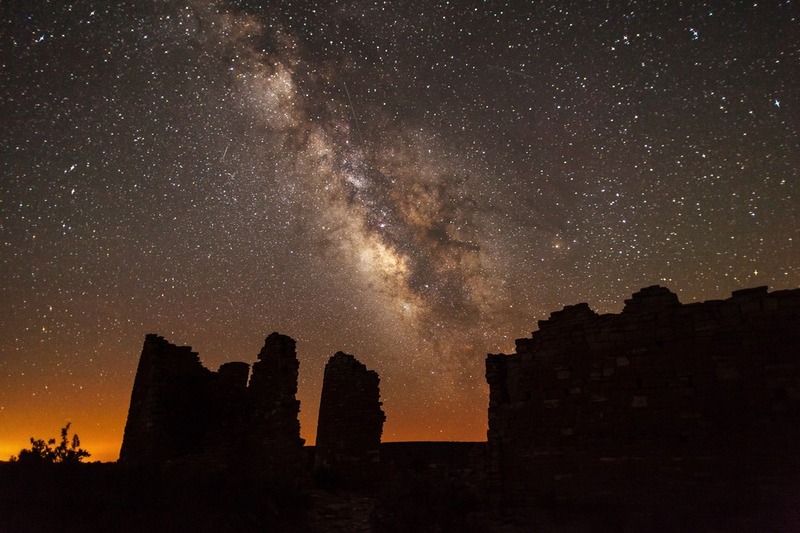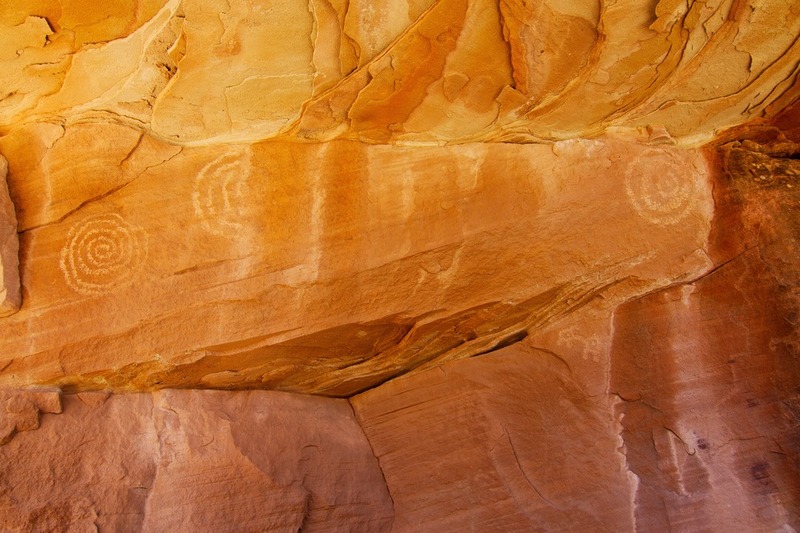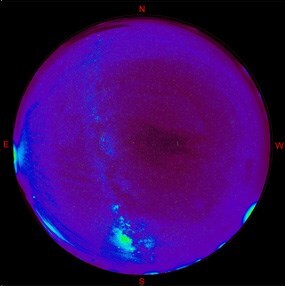Dark Sky over Hovenweep National Monument

“Milky Way at the Square Tower Group.” Jacob W. Frank. Courtesy of the National Park Service. https://www.nps.gov/media/photo/gallery-item.htm?pg=1847642&id=5AC25223-155D-451F-67FDEC98A2E186A8&gid=5B060AD9-155D-451F-676686B3081918F8.
Creator: Jacob W. FrankHovenweep National Monument has been inhabited for over ten thousand years. Its long history of celestial observation culminated in Hovenweep’s 2014 designation as an International Dark Sky Park.
A little over half-a-century after a Latter-day Saint missionary discovered 800-year-old Ancestral Puebloan ruins on the Colorado–Utah border in 1856, Jesse Walter Fewkes of the Smithsonian Institution led a survey of the sites in 1917–1918. Fewkes concluded such a historic site needed to be preserve, and on March 2, 1923, President Warren G. Harding declared Hovenweep a National Monument in the National Park System. Its name means “deserted valley” in the Ute language.
Archaeologists have found evidence of early hunter gatherers in the area dating back to 8000 BCE, but the ruins themselves were used by the Ancestral Pueblo people, who lived in Hovenweep from 900 to 1300 CE. These Ancestral Puebloans practiced celestial observation. Hovenweep National Monument has six clusters of ancient ruins, and within the Holly ruin group there are spiral petroglyphs on a rock wall that are believed to act as markers for equinoxes and solstices. For the Ancestral Pueblo people, spiral symbols often reresent the sun or sky. On the day of a solstice or equinox, a beam of sunlight hits the spiral and bisects the spiral petroglyph. When sunlight perfectly hit the spiral petroglyph, it would signify passage into the next season for practical purposes like expecting weather for farming but potentially also for ceremonial purposes and rituals in kivas.
Over in Hovenweep Castle of the Square Tower cluster, holes in the walls allow beams of light to enter the interior and serve as a solar calendar. Ancestral Pueblo farmers would have used the changing positions of the sunbeams to track the solar cycle and help guide planting and harvesting. Anthropologists and archaeologists continue hypothesizing potential uses for other buildings in the ruins, such as the large stone masonry towers. Further celestial observation and defensive fortification are the two likely purposes for the towers. Large structures have been used for millennia for celestial observation and ritual, such as the ziggurats of the Middle East and Latin America, and the long history of celestial observation in Hovenweep makes it a possibility.
The International Dark-Sky Association designated Hovenweep National Monument an International Dark Sky Park in July of 2014 at the Gold Tier after it accepted the National Park Service’s application for the designation. A Gold Tier Dark Sky Park is a rare designation given to places with the highest quality dark skies, the smallest amount of light pollution, and the potential to see 15,000 stars in the sky. For comparison, typically only 500 stars are visible from a city. An International Dark Sky Park designation is not legally binding, but rather commemorates Hovenweep’s dedication to preserving its clear night sky, an increasingly rare resource.
Images

“Milky Way at the Square Tower Group.” Jacob W. Frank. Courtesy of the National Park Service. https://www.nps.gov/media/photo/gallery-item.htm?pg=1847642&id=5AC25223-155D-451F-67FDEC98A2E186A8&gid=5B060AD9-155D-451F-676686B3081918F8.
Creator: Jacob W. Frank
“Solstice Panel.” Andrew Kuhn. Courtesy of the National Park Service. https://www.nps.gov/media/photo/gallery-item.htm?pg=0&id=5AD1D778-155D-451F-67E3FD65AD4987A5&gid=5AE9EECE-155D-451F-67354605103D179B.
Creator: Andrew Kuhn